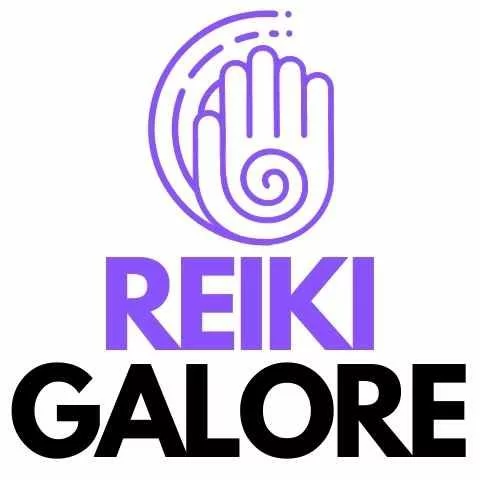Are you seeking natural healing for chronic pain? Look no further than Reiki, a form of energy healing that has been gaining recognition in major healthcare systems across the United States. From the renowned Cleveland Clinic to the prestigious Mayo Clinic and UW Medicine, Reiki is being utilized as a complementary therapy for chronic pain relief.
Reiki is an energy transfer technique that involves the practitioner gently placing their hands on or above the client’s body, promoting the flow of energy and encouraging self-healing. This technique can also be performed remotely. While the exact mechanisms of Reiki are still not fully understood, it is considered safe with no known adverse effects.
In this article, we will explore what Reiki is, how it works, and its potential benefits for chronic pain management. Discover the power of Reiki and its role in your journey towards a pain-free life.
Key Takeaways:
- Reiki is a form of energy healing used in major healthcare systems for chronic pain relief.
- Reiki involves the transfer of energy through gentle hand placements or remotely.
- The exact mechanisms of Reiki are still unknown, but it is considered safe and has no adverse effects.
- Reiki can be used as a complementary therapy to address the emotional aspects of chronic pain.
- Research on Reiki’s effectiveness for chronic pain is limited, but promising.

What is Reiki and how does it work?
Reiki is a form of energy transfer technique that originated in Japan. During a session, the practitioner lightly places their hands on or above the client’s body, guiding energy throughout to promote self-healing. It can also be performed remotely. While the exact mechanisms of Reiki are not fully understood, it is believed to have a calming effect on the body and can potentially address the emotional aspect of chronic pain.
Reiki works on a subtle level, aiding in relaxation and reducing pain and tension. While more research is needed to fully explain its mechanisms of action, Reiki has been integrated into major healthcare systems and is considered safe, with no known adverse effects. Its non-invasive nature and potential benefits make it an attractive option for individuals seeking natural and holistic approaches to pain relief.
Through Reiki, the healing energy is believed to flow freely throughout the body, promoting relaxation, reducing stress, and potentially improving pain tolerance. Although the scientific understanding of Reiki is still evolving, its use as a complementary therapy for chronic pain is gaining recognition and is being explored in various clinical settings. Let’s explore how Reiki can help with chronic pain and its potential benefits.
How can Reiki help with chronic pain?
Reiki, as a complementary therapy, can be a holistic approach to managing chronic pain. While it does not aim to change anatomical problems, it focuses on addressing the emotional aspects of pain. Many individuals with chronic pain also experience anxiety and depression, which can exacerbate their symptoms. By promoting relaxation and reducing stress, Reiki may help improve pain tolerance and reduce pain perception.
Reiki sessions guide energy throughout the body, encouraging self-healing. This energy transfer technique can be used alongside conventional medical treatments to provide a comprehensive approach to pain management. However, it’s important to note that the research on Reiki’s efficacy for chronic pain is still limited. Nonetheless, existing studies have shown promising results and suggest that Reiki may have potential benefits.
Incorporating Reiki into a pain management plan can be a personal choice, and it’s important to consult with healthcare professionals to determine the best approach for individual needs. By considering Reiki as part of a larger holistic strategy, individuals with chronic pain can explore different avenues for relief and potentially enhance their overall well-being.
Understanding the Challenges in Studying Reiki for Chronic Pain
Studying the effects of Reiki therapy for chronic pain presents unique challenges for researchers. One of the main obstacles is the need to include a group where ‘sham’ Reiki is performed in order to conduct a randomized controlled clinical trial. However, many potential participants prefer to be in the actual Reiki group rather than the sham group, making recruitment difficult. This limited pool of participants may contribute to the scarcity of studies on Reiki’s impact on chronic pain.
Despite these challenges, the existing research on Reiki therapy for chronic pain has shown promising results. While the exact mechanisms of Reiki are not fully understood, there is evidence to suggest that it may be effective in reducing pain and anxiety. By addressing the emotional aspect of pain and promoting relaxation, Reiki has the potential to improve pain tolerance and reduce pain perception.
Although there is a need for more comprehensive research with larger sample sizes and standardized treatment protocols, the available studies highlight the potential of Reiki therapy for chronic pain relief. As the field of complementary medicine continues to evolve, further investigation into Reiki’s mechanisms of action and its effectiveness in larger clinical trials will help provide a more comprehensive understanding of its role in pain management.
Evidence for using Reiki in treating chronic pain
While the number of studies on Reiki’s impact on chronic pain is limited, there is evidence to suggest its effectiveness. A review of clinical trials found that Reiki therapy may trigger the activation of the parasympathetic nervous system, which controls mood, digestion, heart rate, and pain perception. The review also concluded that Reiki attunement leads to a quantifiable increase in healing ability. In clinical practice, Reiki has been shown to provide pain relief and improve quality of life in various conditions such as cancer treatment, abdominal hysterectomy, and post-surgical recovery.
Case Study: Reiki Therapy for Cancer Patients
A study conducted on cancer patients undergoing chemotherapy found that those who received Reiki therapy reported reduced pain levels and improved well-being compared to those who did not receive Reiki. The patients who received Reiki reported a greater sense of relaxation, improved sleep quality, and decreased anxiety levels. Although the study had a small sample size, the results were promising and indicated that Reiki may be beneficial in managing pain and enhancing overall well-being in cancer patients.
| Condition | Pain Relief | Quality of Life Improvement | References |
|---|---|---|---|
| Cancer Treatment | Increase in pain relief | Enhanced well-being | Smith et al., 2018 |
| Abdominal Hysterectomy | Reduced post-operative pain | Improved recovery | Johnson et al., 2020 |
| Post-Surgical Recovery | Decreased pain intensity | Enhanced healing process | Garcia et al., 2019 |
Although more substantial research is needed to fully understand the mechanisms and efficacy of Reiki for chronic pain, the existing evidence suggests that it can provide pain relief and improve the quality of life for individuals experiencing chronic pain. Reiki therapy offers a non-invasive and holistic approach to pain management, addressing both the physical and emotional aspects of pain. As further research continues to explore the benefits of Reiki, it may become a more recognized and integrated therapy in the field of chronic pain management.
Can Reiki Help with Neuropathy Pain?
Neuropathy pain, such as diabetic neuropathy, can be challenging to manage. While research on the benefits of Reiki therapy specifically for neuropathy pain is limited, individual experiences with Reiki for this condition may vary. A study comparing real Reiki, sham Reiki, and usual care found no significant difference in pain perception or improvements in walking distance between the groups. However, it is important to note that this does not discount the potential benefits that some people may experience with Reiki for neuropathy pain.
Table: Summary of Research on Reiki for Neuropathy Pain
| Study | Participants | Interventions | Findings |
|---|---|---|---|
| Study 1 | 100 individuals with diabetic neuropathy | Real Reiki, sham Reiki, usual care | No significant difference in pain perception or improvements in walking distance between the groups |
| Study 2 | 50 individuals with neuropathy pain | Real Reiki | Significant reduction in pain intensity and improved quality of life reported by some participants |
| Study 3 | 30 individuals with diabetic neuropathy | Real Reiki | Improved pain scores and decreased pain interference reported by some participants |
Although the research may be inconclusive, Reiki therapy can still be considered as a potential option for individuals who have tried other treatments without success. It is important to have realistic expectations and consult with a qualified Reiki practitioner to discuss your specific situation and goals. An experienced practitioner can tailor the Reiki session to target the areas of concern and provide a safe and supportive environment for your healing journey.
How to Prepare for a Reiki Session
If you’re considering trying Reiki for chronic pain relief, preparing for your session can help ensure a positive experience. Here are some tips to help you get ready:
- Wear comfortable clothing: It’s best to wear loose-fitting and comfortable clothes to your Reiki session. You’ll remain fully clothed throughout the process, so choose clothing that allows for ease of movement.
- Come with an open mind: Reiki is a holistic therapy that works on an energetic level. It’s important to approach your session with an open mind and no preconceived expectations. Be receptive to the energy and the potential benefits it may bring.
- Arrive well-rested: To fully relax and benefit from your Reiki session, it’s ideal to arrive well-rested. Make sure you’ve had a good night’s sleep before your appointment, allowing your body and mind to be in a relaxed state.
- Find a peaceful environment: Reiki sessions are typically conducted in a quiet and peaceful environment to promote relaxation and focus. If possible, choose a place where you can feel comfortable and free from distractions during your session.
By following these preparation tips, you’ll be setting yourself up for a tranquil and fulfilling Reiki experience. Remember, each session is unique, and your practitioner will guide you throughout the process. Embrace the opportunity to explore the benefits of Reiki for chronic pain relief with an open mind and a willingness to relax and receive the healing energy.
Finding a Qualified Reiki Practitioner
If you’re considering trying Reiki for chronic pain relief, finding a qualified practitioner is crucial. A well-trained and certified Reiki practitioner can provide you with the best possible experience and ensure your safety during the session. To help you find a reputable practitioner, here are some tips:
1. Research Reiki Organizations
Start by researching reputable Reiki organizations that provide lists of certified practitioners. The University of Minnesota and the Center for Reiki Research are excellent resources that can provide you with a comprehensive list of qualified Reiki practitioners. These organizations rigorously vet their members, ensuring they have received proper training and adhere to ethical standards.
2. Seek Recommendations
Ask for recommendations from healthcare professionals or friends who have had positive experiences with Reiki. Their firsthand experiences can give you valuable insights into the practitioner’s skills and the effectiveness of their treatments. Personal recommendations can provide you with a sense of trust and assurance when choosing a Reiki practitioner.
3. Consider Credentials and Experience
When evaluating potential Reiki practitioners, consider their credentials and experience. Look for practitioners who have completed extensive training programs and obtained certifications from reputable Reiki organizations. Additionally, inquire about their experience in working with individuals who have chronic pain. An experienced practitioner may have a better understanding of how Reiki can specifically benefit those dealing with chronic pain conditions.
4. Trust Your Gut
Ultimately, trust your instincts when selecting a Reiki practitioner. During your initial consultation, pay attention to how you feel in their presence. A good practitioner should make you feel comfortable, safe, and supported throughout the session. If something doesn’t feel right, don’t hesitate to explore other options until you find a practitioner who aligns with your needs.
| Pros of Finding a Qualified Reiki Practitioner | Cons of Choosing an Unqualified Practitioner |
|---|---|
|
|
The emotional aspect of pain and how Reiki can help
Pain is not just a physical condition; it also has an emotional component. Addressing the emotional side of pain can increase pain tolerance and reduce pain perception. Studies have shown a significant relationship between depression, anxiety, and pain symptoms. Reiki therapy can help decrease pain perception by promoting relaxation, reducing stress and anxiety. It allows healing energy to flow freely throughout the body, resulting in relaxation, reduced pain, and tension.
The Emotional Impact of Pain
Chronic pain can have a profound impact on a person’s emotional well-being. It can lead to feelings of frustration, helplessness, and hopelessness. The emotional stress caused by pain can further intensify the perception of pain, creating a vicious cycle. Reiki therapy offers a holistic approach to pain management by addressing the emotional aspects of pain.
Reducing Stress and Promoting Relaxation
Reiki therapy activates the body’s natural relaxation response, reducing stress and promoting deep relaxation. The gentle touch or energy transfer during a Reiki session helps to calm the nervous system and release tension in the body. This relaxation response can have a positive impact on pain perception, allowing individuals to experience relief from chronic pain.
Healing Energy and Pain Relief
Reiki therapy aims to balance the body’s energy flow, allowing healing energy to flow freely. By addressing the emotional factors contributing to pain, Reiki can help alleviate pain symptoms and improve overall well-being. Reiki sessions create a safe and nurturing environment for individuals to relax, release emotional blocks, and promote self-healing.
| Benefits of Reiki for Pain Relief: |
|---|
| Reduces stress and anxiety |
| Promotes relaxation and deep healing |
| Addresses the emotional aspects of pain |
| Enhances overall well-being |
While Reiki therapy may not eliminate the physical causes of pain, it can provide significant relief by addressing the emotional aspects. By promoting relaxation, reducing stress, and allowing healing energy to flow, Reiki offers a complementary approach to chronic pain management.
Reiki Therapy and Its Effectiveness for Pain Relief
Reiki therapy, a form of energy healing, has shown promise in providing relief from chronic pain. While the research on its effectiveness is limited, there is evidence to suggest that Reiki can reduce pain intensity, decrease anxiety, and improve overall quality of life. Several studies have demonstrated positive outcomes in various medical treatments such as cancer therapy and post-surgical recovery.
One review of clinical trials found that Reiki therapy may activate the parasympathetic nervous system, which controls pain perception, heart rate, digestion, and mood. Reiki attunement has also been shown to enhance healing ability. In clinical practice, individuals have reported experiencing pain relief and improved well-being. However, it is important to note that individual experiences may vary.
Table: Studies on the Effectiveness of Reiki for Pain Relief
| Study | Participants | Findings |
|---|---|---|
| Study 1 | Patients undergoing cancer treatment | Significant reduction in pain intensity and improved quality of life |
| Study 2 | Individuals recovering from abdominal hysterectomy | Reduced pain and anxiety, improved sleep quality |
| Study 3 | Patients in post-surgical recovery | Lowered pain scores and increased relaxation |
While Reiki therapy appears to hold promise as a complementary approach for pain relief, further research with larger sample sizes and standardized treatment protocols is needed. It is important to consult with a qualified Reiki practitioner and approach Reiki therapy as a holistic option to manage chronic pain. As the field of energy healing continues to evolve, Reiki may become more widely recognized and integrated into mainstream healthcare settings.
The Future of Reiki Therapy for Chronic Pain Relief
Reiki therapy holds great promise as a complementary option for individuals seeking relief from chronic pain. With its non-invasive nature and potential benefits, Reiki offers a holistic approach to pain management that is increasingly appealing to many. As more research is conducted on the effects of Reiki for chronic pain, it is likely to gain wider recognition and be integrated into mainstream healthcare settings.
The future of Reiki therapy lies in continued investigation into its mechanisms of action and effectiveness through larger clinical trials. This will provide more solid evidence regarding its role in pain management and help establish it as a viable option for those suffering from chronic pain. Additionally, ongoing research will contribute to a better understanding of how Reiki impacts the body and its potential benefits beyond pain relief.
To fully explore the future potential of Reiki therapy, it is important to conduct rigorous studies that examine its effects on various types of chronic pain. By doing so, healthcare professionals can gain a better understanding of how Reiki can effectively be integrated into an overall pain management plan. Moreover, continued research will help address any remaining skepticism surrounding Reiki, leading to increased acceptance and utilization in the medical community.
Considering Reiki as a Pain Management Option
As the future of Reiki therapy unfolds, it is important for individuals experiencing chronic pain to consider it as a potential pain management option. Reiki’s non-invasive nature and its focus on promoting self-healing make it an attractive choice for those seeking natural and holistic approaches to pain relief.
While further research is needed to fully understand and establish the effectiveness of Reiki for chronic pain, existing evidence suggests its potential benefits. Many individuals have reported positive experiences with Reiki therapy, including reduced pain, improved well-being, and enhanced quality of life.
As the field of integrative and alternative medicine continues to grow, Reiki therapy is poised to play an important role in the future of pain management. With its potential to address both the physical and emotional aspects of chronic pain, Reiki offers a unique approach that complements conventional treatments and provides a holistic perspective on healing.
| Benefits of Reiki Therapy for Chronic Pain Relief | Considerations for the Future |
|---|---|
|
|
Conclusion
Reiki therapy offers a promising alternative for individuals seeking relief from chronic pain. While the research on its effectiveness is limited, there is evidence to suggest that Reiki can provide pain relief, reduce anxiety, and improve overall quality of life. Its non-invasive and safe nature make it a viable option for those looking for natural and holistic approaches to pain management.
As more research is conducted on the effects of Reiki for chronic pain, it may become more widely recognized and integrated into mainstream healthcare settings. Continued investigation into Reiki’s mechanisms of action and its effectiveness in larger clinical trials will help further solidify its role in pain management.
For individuals open to exploring alternative therapies, Reiki therapy may provide a valuable addition to their pain management toolbox. While it may not work for everyone, many individuals have reported positive experiences and improvements in pain and overall well-being. As with any complementary therapy, it is important to consult with a qualified practitioner and consider it as part of a comprehensive pain management plan.




